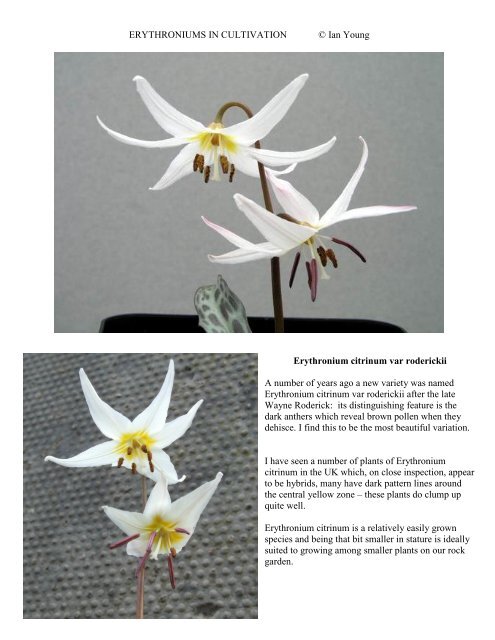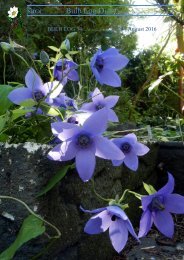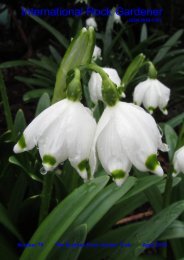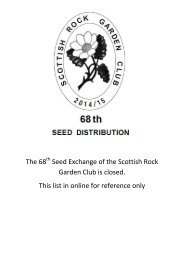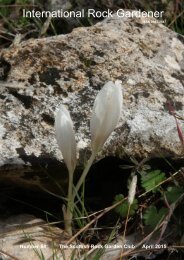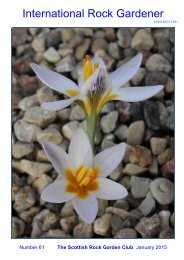ERYTHRONIUMS IN CULTIVATION Erythronium californicum © Ian Young
2015Dec161450265242BULB_LOG_5015
2015Dec161450265242BULB_LOG_5015
Create successful ePaper yourself
Turn your PDF publications into a flip-book with our unique Google optimized e-Paper software.
<strong>ERYTHRONIUMS</strong> <strong>IN</strong> <strong>CULTIVATION</strong><br />
<strong>©</strong> <strong>Ian</strong> <strong>Young</strong><br />
<strong>Erythronium</strong> citrinum var roderickii<br />
A number of years ago a new variety was named<br />
<strong>Erythronium</strong> citrinum var roderickii after the late<br />
Wayne Roderick: its distinguishing feature is the<br />
dark anthers which reveal brown pollen when they<br />
dehisce. I find this to be the most beautiful variation.<br />
I have seen a number of plants of <strong>Erythronium</strong><br />
citrinum in the UK which, on close inspection, appear<br />
to be hybrids, many have dark pattern lines around<br />
the central yellow zone – these plants do clump up<br />
quite well.<br />
<strong>Erythronium</strong> citrinum is a relatively easily grown<br />
species and being that bit smaller in stature is ideally<br />
suited to growing among smaller plants on our rock<br />
garden.


